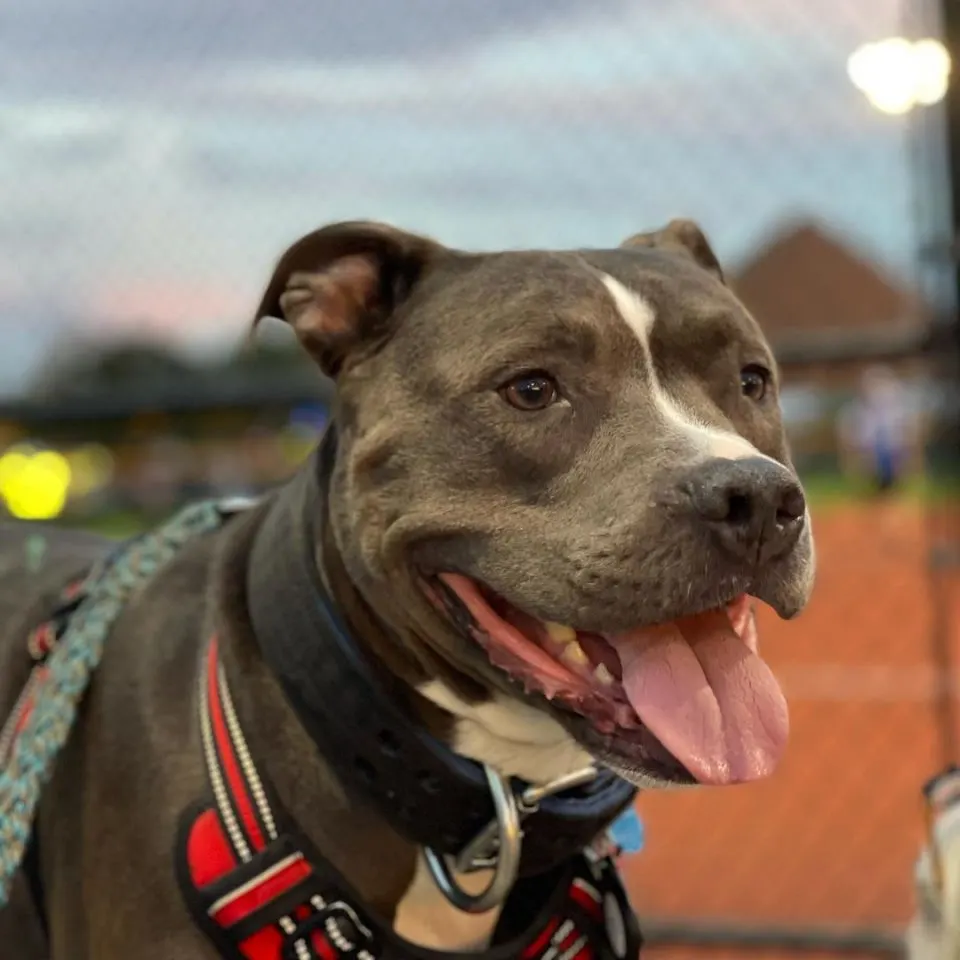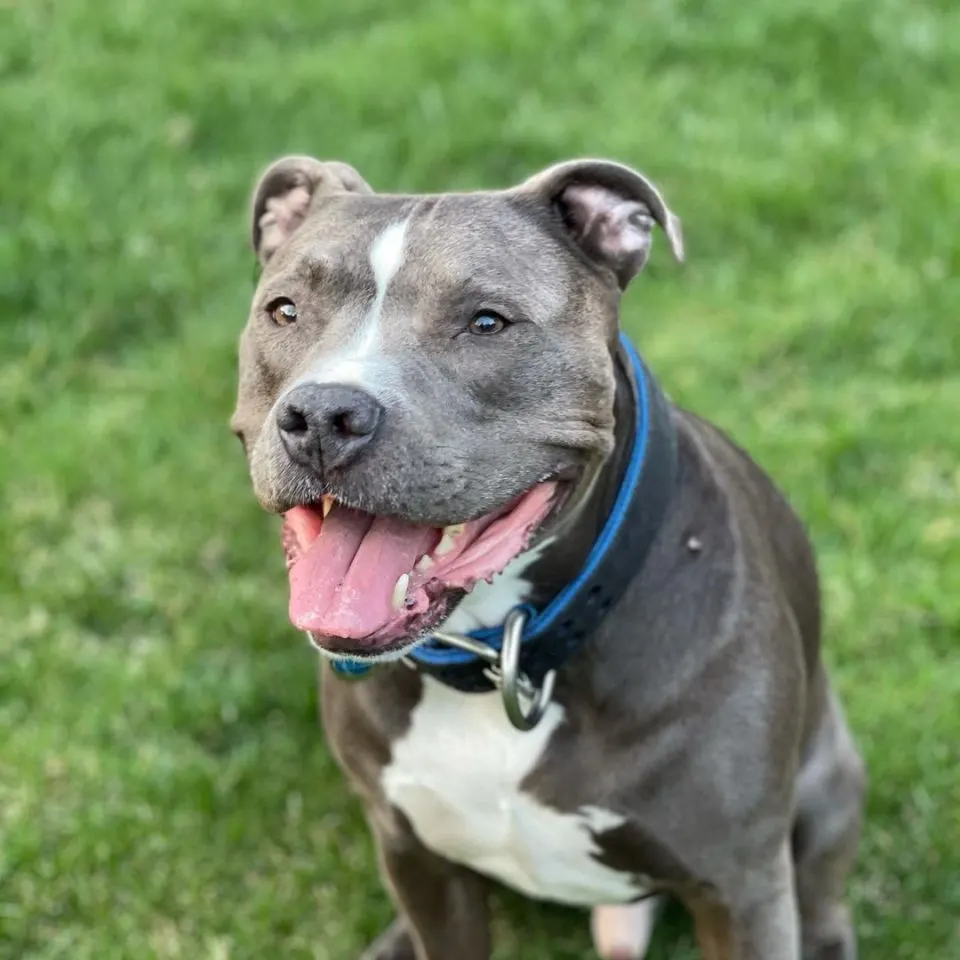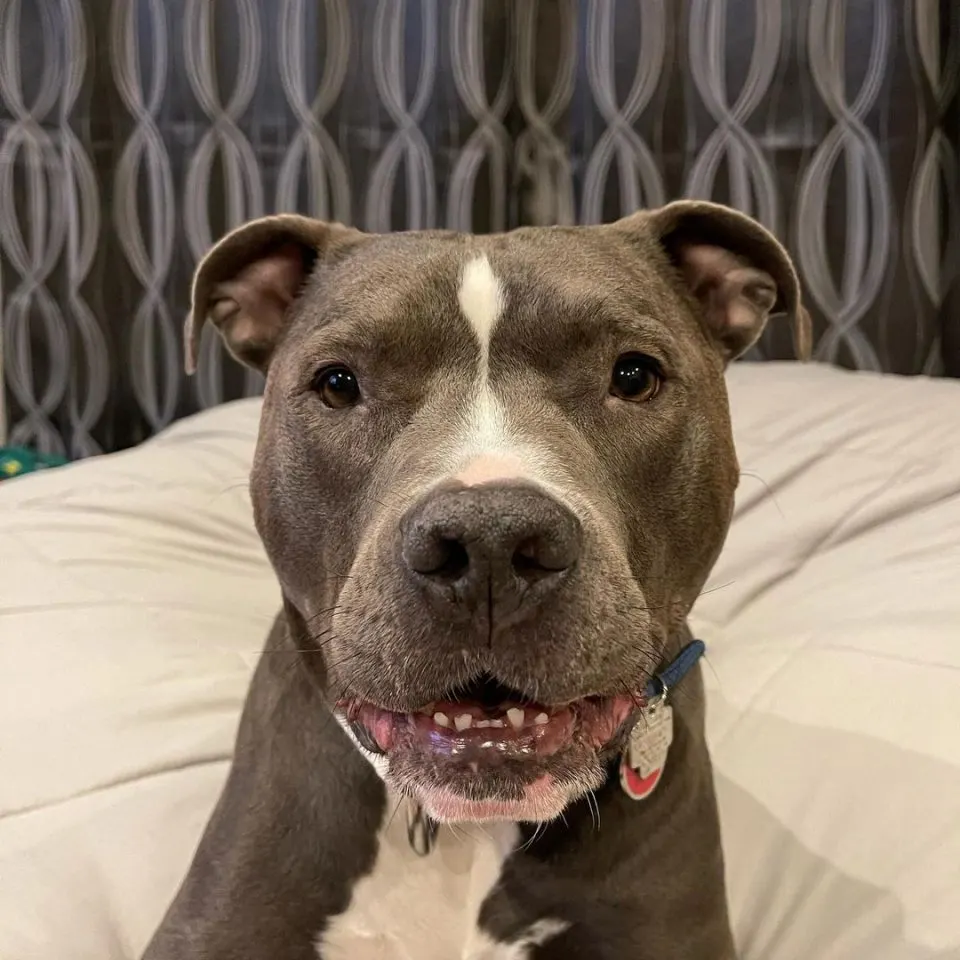I’m pretty sure that each and every one of us has that one favorite song that we would not get tired of even if we sang it 15 times a day.
Well, Turbo, the pup of today’s story, has a song just like that.
Happy Birthday

Turbo, a beautiful Pit Bull, has one song that he loves with his whole heart, and that song is no other than the Happy Birthday Song.
Even though he found out about it very randomly, it was love at first listen.
“It was 2:30 in the morning and my husband was sound asleep. I was watching TV and it was a gentleman’s birthday on the TV show and they started singing and Turbo woke up from dead sleep to sing happy birthday,” said Holly, Turbo’s mom.
Ever since, whenever Turbo hears that song, he joins in.
And, no matter how many times the song is sung, he will join in every single time, especially if there are more people involved.
He loves to be in a group. The more people that sing, the louder he sings. It’s very specific to just that song.

His family also tried playing other songs to see if he would sing them, but Turbo simply refused every time.
Whenever he sings his favourite song, everybody around him falls in love with him even more, especially his mom, Holly.

For me, he is just called one of my boys. He is one of my babies. He is my youngest. Wherever I am, pretty much you will find him.
Turbo surely is part of the family, even appearing in family portraits and being referred to as a brother by Holly’s kids.
Hateful Stereotype

Even with this adorable trait, as well as his stunning looks, Turbo still has a hard time fitting in.
Since he belongs to one of the most stereotyped dog breeds, making friends isn’t as easy as it might seem.
We live in a family-oriented neighborhood. A lot of our neighbours know us and love us but there are a lot of neighbors when they see us on one side they will cross to the other. We definitely do get that stereotype a hundred percent.
However, neither Holly nor Turbo let that get the best of them. They just throw on a big smile and keep on walking.

This stereotype truly breaks Holly’s heart since she knows that Turbo is very silly and the gentlest guy she knows.
We have friends who bring their dogs over all the time and he is so gentle with them. When he sees little chihuahuas, he hides behind me.

Breaking The Stereotype
Unfortunately, many believe Pit Bulls to be a very aggressive breed. However, this couldn’t be further from the truth and Turbo is here to prove it.
As soon as somebody comes across this handsome gentleman and his melodic singing, it becomes clear as day that he is the purest soul around.

My goal is to always make sure that he knows how special he is and how much we love him.
So please, let this pup be a reminder that you should not be prejudiced toward any animal and their breed, as they are so much more than rumours. They have a heart and a soul just like us!
If you’ve ever been around dogs, you know that heart-tugging sound they make when they whine. It’s like their way of communicating something deeper, something that goes beyond just making noise. As a seasoned dog trainer, you’ve probably encountered your fair share of whining pups, each with their unique reasons for vocalizing in this manner.
When a dog starts to whine, it’s as if they’re trying to tell you a story without using words. It could be a sign of excitement, anxiety, or even a plea for attention. Understanding why dogs whine can provide valuable insights into their emotional state and help you build a stronger bond with your furry companion.
Understanding Dog Whining: The Basics
The Language of Dogs
Dogs communicate with humans and other animals through various sounds and body language. Whining is one of the ways they express their needs and emotions. It’s essential to understand that your furry friend’s whining is their way of trying to tell you something.
Types of Whines and What They Mean
Dogs have different types of whines, each carrying a unique message. A high-pitched whine may indicate excitement or anticipation, while a prolonged, low whine could signal discomfort or anxiety. Recognizing these different whines can help you respond appropriately to your dog’s needs.
Common Reasons for Dog Whining
Attention-Seeking Behavior
When your dog whines, it may simply be seeking your attention. Dogs are social animals and may whine to communicate their desire for interaction, playtime, or affection. Paying attention to your furry friend’s needs can help reduce attention-seeking whining.
Anxiety and Stress
Dogs can whine when they feel anxious or stressed. This whining may be a way for them to express unease or discomfort. Understanding the triggers that cause anxiety in your dog, such as loud noises or separation, can help you address their stress and reduce whining.
Excitement and Anticipation
Whining can also be a sign of excitement or anticipation. Your dog may whine when they are eager for a walk, playtime, or a meal. Recognizing these cues can help you positively channel your dog’s excitement and energy.
Pain or Discomfort
Whining might indicate that your dog is in pain or experiencing physical discomfort. It’s essential to monitor your dog’s whining patterns and behavior to determine if there are any underlying health issues causing their distress. Consulting a veterinarian is crucial if you suspect pain-related whining.
Learned Behavior
Sometimes, dogs learn that whining gets them what they want. If your dog has been rewarded with treats or attention in the past for whining, they may continue this behavior to achieve their goals. Consistent training and positive reinforcement can help discourage this learned whining behavior.
The Role of Breed and Temperament
When it comes to understanding why dogs whine, you should consider their breed and temperament. These factors play a significant role in how vocal and expressive your furry friend might be. Let’s take a closer look at how breed-specific vocalization tendencies and temperament impact your dog’s whining behavior.
Breed-Specific Vocalization Tendencies
Different dog breeds have distinct vocalization tendencies. Some breeds are naturally more vocal than others. For example, hound breeds like Beagles and Bloodhounds are known for their melodious baying, while some toy breeds like Chihuahuas can be quite yappy. Understanding your dog’s breed characteristics can help you comprehend why they whine. If your dog’s breed is predisposed to vocalizing, their whining may simply be part of their nature.
The Impact of Temperament on Whining
Just like humans, dogs have unique personalities and temperaments that influence their behavior, including whining. Anxious dogs may whine more frequently as a way to vocalize their stress, while more confident dogs might whine less often. A dog’s temperament can also affect how they seek attention or express discomfort through whining. By considering your dog’s individual temperament, you can better interpret the reasons behind their whining and respond appropriately to meet their needs.
How to Respond to Your Dog’s Whining
Deciphering the Message
When your dog whines, it’s crucial to decipher what they’re trying to communicate. Assess the situation; are they seeking attention, feeling anxious, or maybe in pain? Understanding the underlying reason will guide your response.
Training and Positive Reinforcement
Training your dog to communicate in ways other than whining is beneficial. Use positive reinforcement techniques to reward desired behaviors. Redirect their whining by teaching alternative ways to express their needs or emotions.
When to Seek Professional Help
If your dog’s whining persists despite trying various strategies, consider seeking professional help. A veterinarian or dog behaviorist can provide valuable insights into your dog’s behavior and offer tailored solutions to address the underlying issues.
Preventing Excessive Whining
Providing Adequate Exercise and Mental Stimulation
To prevent your dog from excessive whining, make sure they get enough exercise and mental stimulation. Dogs, like humans, need physical activity to release pent-up energy and prevent boredom, which can lead to whining. Regular walks, playtime, and engaging toys can help keep your furry friend entertained and content.
Establishing Routine and Structure
Creating a routine and structure for your dog can help reduce whining behavior. Dogs thrive on predictability, so establishing consistent mealtimes, walks, and play sessions can provide them with a sense of security. By setting clear expectations and boundaries, you can help your dog feel more secure and less likely to whine for attention or out of anxiety.
Conclusion
Understanding why dogs whine is crucial for strengthening your bond with your furry friend. Dogs communicate their needs and emotions through whining, whether it’s for attention, due to anxiety, excitement, or even pain. Responding to your dog’s whining involves decoding their message, training them with positive reinforcement, and seeking professional help if needed. Providing adequate exercise and mental stimulation can prevent excessive whining by keeping your dog physically and mentally satisfied. Establishing a routine with consistent mealtimes, walks, and play sessions can create a sense of security for your dog, reducing whining behavior. By addressing your dog’s whining with patience and understanding, you’ll create a harmonious relationship filled with clear communication and mutual happiness.
Frequently Asked Questions
What are the common reasons why dogs whine?
Dogs may whine due to attention-seeking behavior, anxiety, excitement, pain, or learned behavior influenced by breed and temperament.
How can I respond to my dog’s whining?
Decipher the message behind your dog’s whining, train for alternative communication methods with positive reinforcement, and seek professional help if the whining persists.
How can I prevent excessive whining in my dog?
Provide adequate exercise and mental stimulation, establish a routine and structure with consistent mealtimes, walks, and play sessions to reduce whining behavior.
[no_toc]

Hey there, I’m Janet Brooks, a dog-loving student from California. I’m all about helping pups in need, especially those without homes. Me and my awesome friends work together to give shelter and love to stray dogs. Oh, and I also write blogs about dogs to share helpful info.